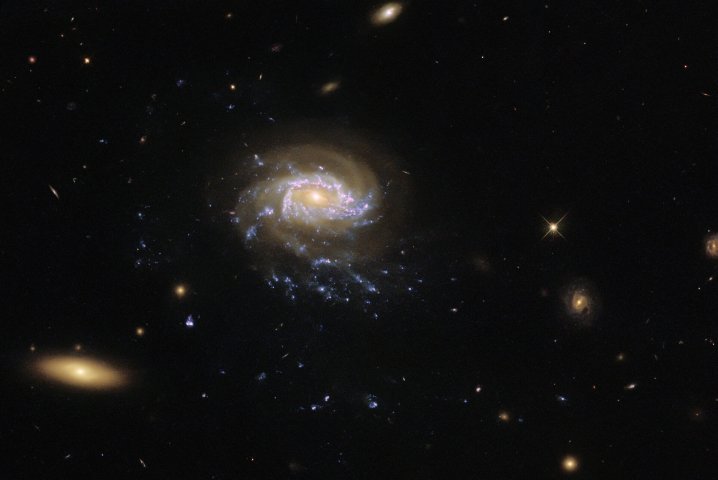This week’s image from the Hubble Space Telescope shows a special and delightful cosmic object: a jellyfish galaxy. These galaxies are named for their larger main body with tendrils that float along after them, like the sea creatures.
This particular jellyfish galaxy is called JO201, and is located in the constellation of Cetus. Appropriately for the sea theme, Cetus is a constellation named after a Greek mythological sea monster that sometimes had the body of a whale or serpent along with the head of a boar. In the image, you can see the main body of the galaxy in the center, with the trailing tendrils spreading down toward the bottom of the frame.

Jellyfish galaxies are formed due to an effect called ram-pressure stripping, in which the gravity of other nearby objects like galaxies or galaxy clusters acts like a headwind, moving dust and gas from the galaxy and stripping it in some regions. This process can slow star formation in the galaxy as there is no longer enough dust or gas available to form new stars, and can even cause the eventual death of the galaxy in question.
This image was taken using Hubble’s Wide Field Camera 3 instrument looking in both the optical and ultraviolet wavelengths, in order to pick out all the important features of the galaxy, its dust and gas, and its tendrils. It was taken as part of research into jellyfish galaxies and how star formation occurs within them.
“This particular observation comes from an investigation into the sizes, masses, and ages of the clumps of star formation in the tendrils of jellyfish galaxies,” Hubble scientists write. “Astronomers hope that this will provide a breakthrough in understanding the connection between ram-pressure stripping — the process that creates the tendrils of jellyfish galaxies — and star formation.”



